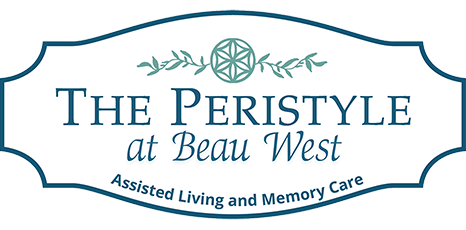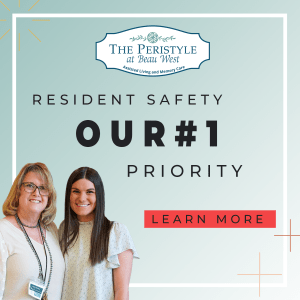The jargon and terminology used in describing various aspects of senior care can be confusing, especially for those looking for care for the first time. Assisted living, memory care, skilled nursing, respite care… What does it all mean?
Below is a breakdown of senior living levels of care and the services you can expect. We list each level of care in order of the complexity and severity of the health challenges addressed. We hope this article assists you in making the right choice for your elderly loved one in your search for the best environment for their needs.
Peristyle Beau West is located in Mandeville on the Northshore of New Orleans. Please contact us to schedule a free tour of our fully secured memory care community.
Independent Living (Retirement Communities)
Independent living is the lowest level of senior care, whereby residents do not receive any additional support with activities of daily living (ADLs) or medical care. Seniors will live in a retirement home or community with others their age and are responsible for self-autonomy and complete independence. Independent living allows seniors to maintain their dignity and enjoy a high quality of life. It encourages them to remain active, engaged, and connected with others, which is critical to avoid social isolation. Most independent living communities offer amenities such as maintenance-free housing, transportation services, and social activities.
Assisted Living
Assisted living is the second level in the continuum of senior care. This important healthcare service helps elderly or disabled individuals requiring personalized support with daily tasks. Some of these duties include cooking, cleaning, bathing, and medication management, among others. Assisted living can be administered in various settings such as large communities, residential care homes, and even as a wing of a continuum care retirement community. Most commonly, care is administered by a Registered Nurse (RN), Licensed Practical Nurse (LPN), or Certified Nursing Assistant (CNA). Assisted living communities also offer various amenities and services, like independent living, but with more supervision and assistance from the staff.
Memory Care
Memory care communities are a necessity for those suffering from cognitive impairment. Families can find relief knowing their elderly loved one is cared for by trained staff in Alzheimer’s disease, dementia, and other forms of memory loss. Not all memory care patients suffer from the same conditions and symptoms, complicating the complexity of care. That’s why it’s important for your elderly loved one to have a full review before the move-in at any memory care community. Most memory care communities are locked, secured, and have a wander guard, ensuring patients do not venture outside the premises. Lastly, most facilities will provide various treatments, such as music therapy, pet therapy, etc., to help stimulate memory.
Skilled Nursing (Nursing Homes)
Skilled nursing is the highest level in the continuum of care. Contrary to the previous levels of care, skilled nursing provides medical care to patients. Skilled nursing is administered in a nursing home setting, either as a standalone building or as a wing of a larger community. Depending on the patient’s need, facilities will offer short-term rehab, long-term care, or both. Typically, patients out of surgery require intermediate post-op care, whereas patients with life-long conditions and injuries need a long-term solution. Some of the services you can expect at a nursing home include wound care, medication management, vital signs, physical therapy, and assistance with activities of daily living.
Continuum of Care Retirement Communities
Continuum-of-care retirement communities (CCRCs) are a unique type of senior living, containing all levels of care, including independent living, assisted living, memory care, and skilled nursing. CCRCs are often more expensive than communities with only one or two levels of care, but the benefit is convenience. For example, if your elderly loved one lives in an assisted living community that doesn’t support skilled nursing care, a transfer would be required if a nursing home is needed. On the contrary, continuum care retirement communities allow the elderly individual to stay in one community regardless of their level of care, creating convenience and ease for the senior and all decision-makers involved.
Senior Living Alternatives
Depending on which level is required, senior living is often the best care option for many people. However, seniors respond differently in each situation; sometimes, an alternative is most appropriate for the individual’s needs. Many older adults prefer to stay in their home’s comfort and familiarity. In these cases, pending social isolation and the patient’s health, it may be best to hire a home healthcare agency for assistance. There are also situations where hospice care is required, regardless of whether the senior lives at home or in a senior living community.
Conclusion
We hope the information above aids you in navigating the complexities of senior living. Remember that the level of care required for safety, independence, and overall health will determine which type of senior living community is best for you or an elderly loved one.
For more information on assisted living and memory care in New Orleans, please contact Peristyle Beau West for more details or check out our Family Resources page. Our team of expert caregivers is background checked, screened, and trained, ensuring the safety and well-being of your elderly loved one. We are excited to meet your family!






